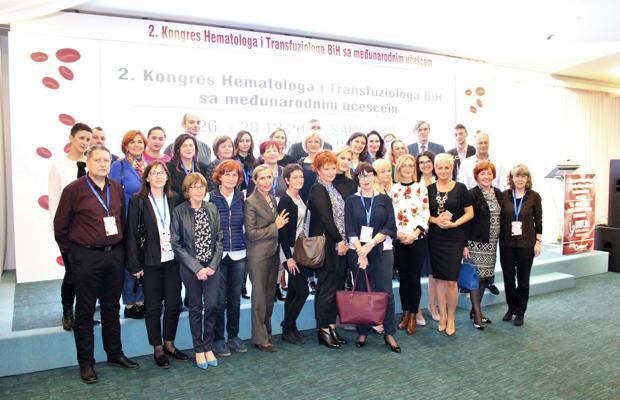Lenalidomide Well Tolerated and Active in Combination With Fludarabine and Rituximab for Previously Untreated CLL (715)
Program: Oral and Poster Abstracts
Type: Oral
Session: 642. CLL - Therapy, excluding Transplantation: Novel Immune Therapies for CLL
Monday, December 10, 2012: 4:30 PM
Thomas Murphy Ballroom 4, Level 5, Building B (Georgia World Congress Center)
Ian W. Flinn, MD, PhD1,2, R. Seth Cooper, MD1,2, Dana S. Thompson, MD1,2*, Jamie K. Waselenko, MD3*, James Reeves Jr., MD1,4*, Rudolph L. Wise, MD1,5, John D. Hainsworth, MD1,2 and Jesus G. Berdeja, MD1,2
1Sarah Cannon Research Institute, Nashville, TN
2Tennessee Oncology PLLC, Nashville, TN
3Cincinnati Hematology-Oncology, Inc., Cincinnati, OH
4Florida Cancer Specialists, Ft. Myers, FL
5South Carolina Oncology Associates, Columbia, SC
Background: Fludarabine, rituximab, and cyclophosphamide (FCR) combinations have shown high CR rates in CLL, but toxicity-related concerns remain. Lenalidomide has been shown to have clinical activity in patients (pts) with CLL and is a potential alternative addition to the fludarabine, rituximab backbone. This is a nonrandomized, open label phase I/II dose-finding study of lenalidomide combined with fixed doses fludarabine and rituximab in a minimally or untreated population of patients with CLL. The Phase I portion will examine this combination regimen in pts who are untreated or have received minimal treatment comprised of single agent rituximab while the Phase II portion will enroll untreated CLL patients. Both Phases I and II of the study will consist of a screening, treatment, and a post-treatment period.
Methods: Patients had untreated Rai stage III/IV or symptomatic stage 0-II CLL with no CNS involvement, ECOG PS 0-2, & adequate organ function. The phase I portion of this trial explored fixed doses of rituximab. The treatment schedule described is an alternative to the original schedule that had concurrent lenalidomide and chemotherapy dosing. Four pts were enrolled and the schedule was found to be toxic and discontinued. The protocol was amended to the following dosing schedule: rituximab(375 mg/m2 Cycle (C) 1, split over days (D)1 & 2), 500 mg/m2 D1 of C 2-6) and fludarabine (25 mg/m2on D1, 2, and 3) with one of two dose levels (DL) of lenalidomide, DL1 - 2.5mg PO on D8-28 of C1-6 (n=6), DL2 - 2.5mg PO D8-28 of C 1 & 5.0mg on D8-28 of C2-6 (n=45). Patients were restaged post-C3, 2 months after completion of treatment (≤6C), and every 6 months until disease progression. Study endpoints included response rate, progression free survival (PFS) and overall survival (OS).
Results: Between 11/2008 & 5/2012, 64 pts enrolled; results are reported on 51. Pts were 55% male, with a median age of 62 yrs (range: 44-82 yrs). Rai stage at study entry was 8%/41%/20%/14%/17% for Rai stages 0/1/2/3/4 respectively. At the time of this analysis, 59% of pts had completed treatment. Treatment discontinuation due to toxicity occurred in 10% of pts; rash was the most common reason for participants to come off study prior to completing planned therapy. Grade 3/4 hematologic adverse events observed regardless of cause were: anemia (G3 12% and G4 2%), neutropenia (G3 25% and G4 22%), febrile neutropenia (G3 2% and G4 2%) and thrombocytopenia (G3 2% and G4 4%). The most frequently occurring treatment related non-hematologic adverse events were: rash (G3 12% and G4 2%), infection (G3 8%) and fatigue (G3 5%). Responses were reviewed by FISH risk profile and IWCLL 2008 criteria. Six patients were poor risk displaying 11q and/or 17p deletion. All pts with good risk indicators and those pts who did not meet criteria for good/poor risk were grouped and responses are shown below in table 1. Median FU was 21 months (range 0.03-45). Kaplan-Meier estimates of PFS and OS at 24 months is 71% and 88% respectively. At 24 months the estimated PFS and OS rates for the poor risk group were 60% and 66% respectively.
Conclusion: Lenalidomide in combination with fludarabine and rituximab is a potential alternative to FCR. While response rates appear lower than studies with FCR so does toxicity. The toxicity of lenalidomide in this combination is schedule dependent. A unique side effect is rash which can occur at even the lowest doses of lenalidomide. Further follow-up is necessary to determine median PFS and OS
Table 1
|
Response assessment |
Poor risk 11q and or 17p deletion pts (N=6) |
Good risk and all other pts (N=45) |
Total (N=51) |
|
CR |
16.6% |
22% |
11% |
|
PR |
16,6% |
44% |
41% |
|
SD |
16.6% |
9% |
10% |
|
PD |
0 |
0 |
0 |
|
ORR |
33% |
66% |
63% |
Disclosures: Off Label Use: Off-label lenalidomide, investigational use in CLL. Reeves: Celgene: Equity Ownership.





